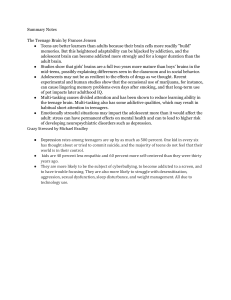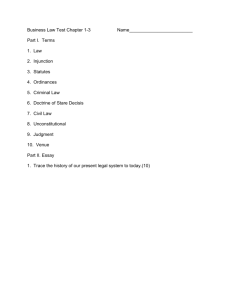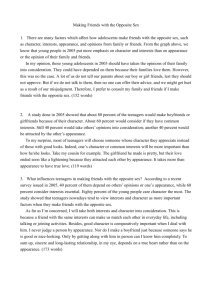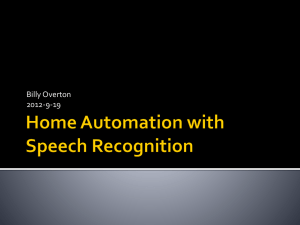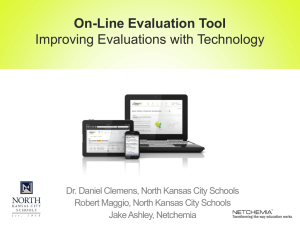Too Much Technology?
advertisement
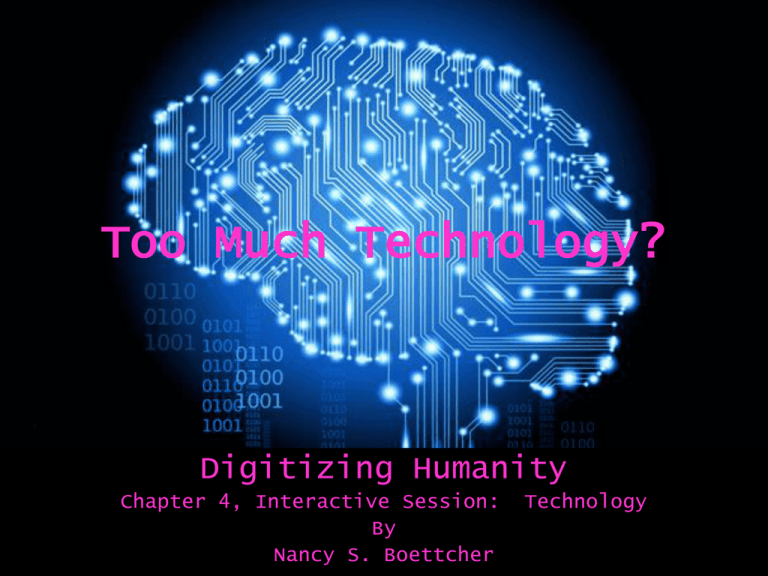
Too Much Technology? Digitizing Humanity Chapter 4, Interactive Session: By Nancy S. Boettcher Technology What are some of the arguments for the use of digital media? Over the last 15 years, digital communication has ushered in more changes than the printing press did in 1570. It It It It took took took took the radio 38 20 years for 13 years for Facebook 3.6 years to reach 50 million people, the phone, the television. years and Twitter didn’t even need that much time It took Google Plus 88 days. (http://scienceillustrated.com.au/blog/features/teenage-brains-in-the-digital-world/) PROS: Catalyst for change Medical Innovations Real-time data access Global communication & Trade Virtually limitless information Multi-tasking Positive social change Broadened Cultural Awareness & Understanding CONS: Over stimulation Lack of Focus Inability to think clearly Poor decision making Brain physiological changes Acceptance of misinformation as fact Reduced physical activity Reduced ‘face to face’ interaction “In the US, teenagers are spending 8.5 hours using computers, mobiles and other devices to learn, interact and play. This jumps to 11.5 if you take into account all of the multi-tasking that goes on, such as talking on the phone while you’re watching TV. Australian teenagers were found to be spending an average of 7 hours, 38 minutes using these devices in 2009.” Google “Thanks to the changing physiology of their brains, teenagers can adapt easily to new technology” (http://scienceillustrated.com.au/blog/features/teenage-brains-in-the-digital-world/). How might the brain be affected by constant digital media use? •Neural pathway changes •Reduction in deeper thinking skills •Lack of eye contact & awareness of body language leading to reduction in empathy •Desensitization to violence •Enhanced mental agility •Enhanced visuomotor co-ordination Do these arguments outweigh the positives of digital media use? “Like climate change, mind change is complex, unprecedented and controversial. However, the endpoint is not one of damage limitation. It is, rather, ensuring that we deliver to the next generation an environment that can, for the first time, enable the realization of each individual’s full potential.” Baroness Greenfield, Oxford University, 2012 What additional concerns are there for children using digital media? Not enough people time Not enough hands-on time Too much stimulation Too much sedentary time Young Children and Computers: Some Pros and Cons (http://www.whattoexpect.com/toddler/toddler-learning/young-children-and-computers.aspx)g Should children under the age of 8 years use computers and cell phones? Computer Use Improves School Readiness Study of 122 preschoolers in a rural Head Start Program given 15-20 minutes per day on computers. Test group given choice of developmentally appropriate educational software Control group given standard Head Start curriculum. All took 4 standardized tests at the beginning and six months later testing school readiness, visual motor skills, gross motor skills and cognitive development. Those who worked on a computer performed better on school readiness and cognitive development. Those who worked on a computer at home and at school performed better than those who only had access at school. By Gary Heiting, OD, senior editor of AllAboutVision.com
